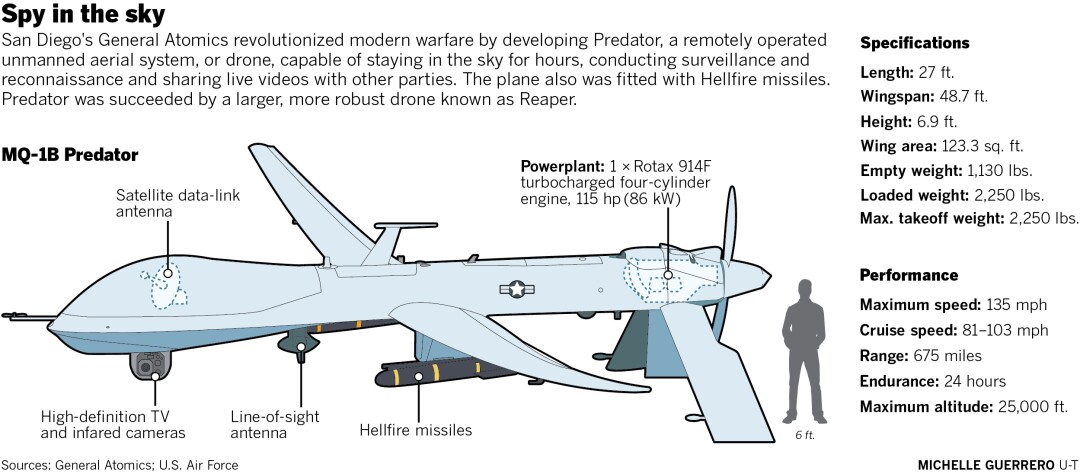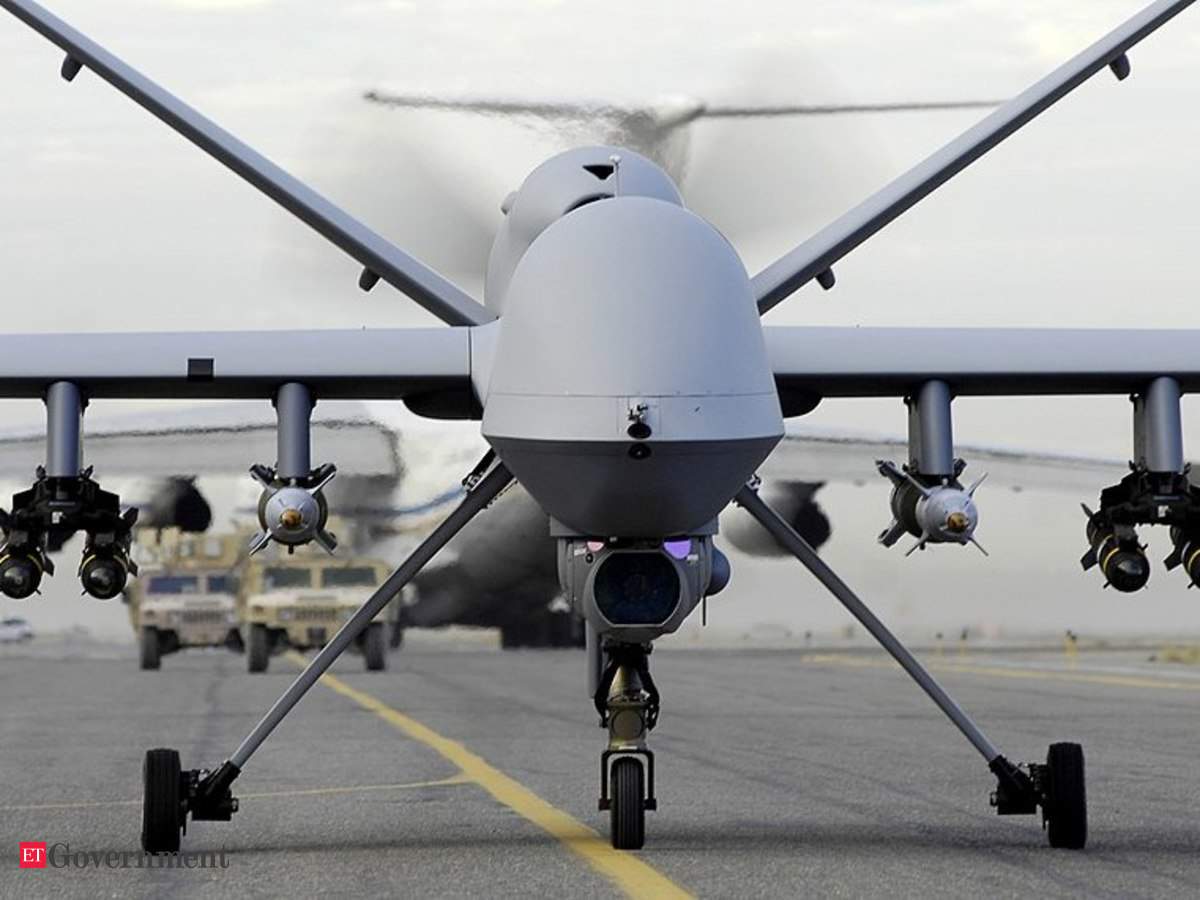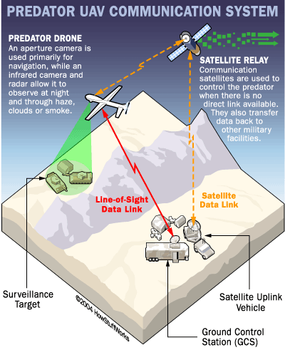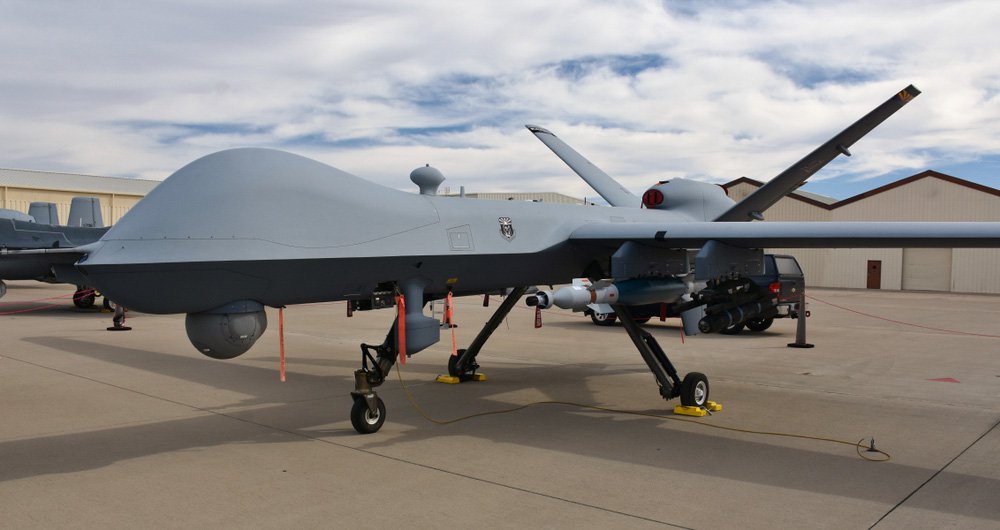After S400 India eyeing for $3 billion Predator drone deal with U.S.
India is close to finalising a $3 billion contract with the United States for Predator drones.

Wednesday, November 17, 2021 | Chimniii Desk
Key Highlights
- India is nearing completion of a long-awaited plan to purchase 30 multi-mission armed Predator drones from the United States for the three services at a cost of more than $3 billion (approximately?22,000 crore), official sources said Tuesday.
- The plan to acquire the MQ-9B long-endurance drones armed with air-to-ground missiles is expected to be approved by the Defence Acquisition Council (DAC) in the coming weeks, they added.
- The Indian Navy has initiated the acquisition process, and each of the three services is expected to get ten drones.
- The US approved the sale of armed drones to India in 2019 and even offered to sell India integrated air and missile defence systems.
- The Indian Navy leased two Predator drones from the United States last year, mostly for surveillance over the Indian Ocean.
Advertisement

India is nearing completion of a long-awaited plan to purchase 30 multi-mission armed Predator drones from the United States for the three services at a cost of more than $3 billion (approximately?22,000 crore), official sources said Tuesday.
The plan to acquire the MQ-9B long-endurance drones armed with air-to-ground missiles is expected to be approved by the Defence Acquisition Council (DAC) in the coming weeks, they added. The proposal will then be presented to the Prime Minister-led Cabinet Committee on Security.
According to the sources, several critical components of the purchase, including the cost component and weapons package, have already been finalised, and the mega-deal with the US is expected to be completed this fiscal year.
The Vice Chief of the Indian Navy's Vice Admiral stated that the suggestion will be presented to the DAC in a "short period of time."
"The procurement process is designed to ensure that we make a balanced conclusion, and as such, input from all stakeholders is sought. The process is ongoing, and we have made significant progress. This will be transferred to DAC in the near future," he told reporters at an occasion.
The Indian Navy has initiated the acquisition process, and each of the three services is expected to get ten drones.
The remotely piloted drones, built by US defence contractor General Atomics, have a range of missions including surveillance, reconnaissance, intelligence collection, and destroying hostile targets.
Advertisement

The Predator-B medium-altitude long-endurance (MALE) drone is the world's first hunter-killer unmanned aerial vehicle (UAV) built for long-endurance and high-altitude surveillance.
Following the standoff with China in eastern Ladakh and a drone strike on the Jammu airfield, the Indian armed services have been focussing on obtaining unmanned vehicles, particularly armed drones.
Drones equipped with explosives were deployed to target the Jammu Air Force station in June, marking the first time suspected Pakistan-based terrorists employed unmanned aerial vehicles to attack important Indian military installations.
The US approved the sale of armed drones to India in 2019 and even offered to sell India integrated air and missile defence systems.
The Indian Navy has pushed hard for the acquisition to bolster its overall surveillance over the Indian Ocean, an area that has seen an increase in Chinese ships and submarine excursions in recent years.
The Indian Navy leased two Predator drones from the United States last year, mostly for surveillance over the Indian Ocean.
The two unarmed MQ-9B drones were leased for one year with the option to renew.
India signed a $2.6 billion contract with the United States in February last year to acquire 24 MH-60 Romeo helicopters from American aerospace giant Lockheed Martin for the Indian Navy. The helicopters have already begun to be delivered.
Advertisement
WHAT IS THE MQ-9B PREDATOR Drone?

While they may appear to be a relatively recent addition to the military horizon, the Predator drone has been in service for more than two decades. The first prototype of the Predator drone was tested in the early 1990s and went into production in 1997.
According to experts, these drones were first conceived as a system capable of providing "permanent intelligence, surveillance, and reconnaissance information paired with a kill capability."
The Predator system — which has undergone numerous revisions and improvements — achieved operational status well before the full-fledged war on terror began in 2001 in the aftermath of the 9/11 attacks, with its first deployment in Bosnia in 1995 in support of NATO, UN, and US operations. Initially, they served primarily as reconnaissance devices; however, by 2005, they had been repurposed to attack targets and were utilised in both Afghanistan and Iraq.
The initial Predator systems were designated RQ, with 'R' standing for 'reconnaissance' and 'Q' standing for 'remotely piloted aircraft system. According to accounts, the aircraft received the 'MQ' designation — 'M' stands for 'multi-role' — in 2002, following the deployment of Hellfire missiles.
Advertisement
HOW THIS SYSTEM WORKS?

The capabilities of the Predator demonstrate why it has become a cherished possession for any military. These drones are capable of intelligence, surveillance, and reconnaissance missions, as well as close air support and combat search and rescue missions, as well as precision strikes. They can be used to monitor convoy movements and also to aid in the targeting of specific targets.
While these aircraft operate without crew, they have been jokingly referred to as "more'manned' than many other combat aircraft" because the "basic crew for the Predator is a rated pilot to control the aircraft and command the mission... an enlisted aircrew member to operate sensors and weapons as well as a mission coordinator, when required." This crew operates the aircraft via a data or satellite link from a ground control station.
According to General Atomics' specifications, the drone has a 40-hour flight time and can reach altitudes of more than 40,000 feet. It measures 38ft in length and 79ft in wingspan. Apart from additional munitions, it can carry "up to four Hellfire II anti-armour missiles and two laser-guided bombs."
While the US military also "adapted a Predator to carry Stinger missiles and attempted an air-to-air engagement with an Iraqi MiG-25 — a dogfight that resulted in the Predator's loss," experts note that the drone is "well-suited to the nature of the global war on terror," operating "for the most part... against terrorists and insurgents who lack aircraft and air defences."
Advertisement
HOW MANY COUNTRIES ARE EQUIPPED WITH MILITARY DRONES?

Due to their adaptability and the lower costs and hazards associated with their operation, drones are now considered an integral part of modern military arsenals and are credited with "unmistakably altering the character of combat in strategy, action, and perception."
According to accounts, over ten countries have deployed drones to conduct strikes, including the US, Israel, the United Kingdom, Pakistan, Iran, Turkey, and Russia, with many more countries reportedly possessing armed drones.
The United States and Israel are often regarded as the world's largest makers and sellers of drones. However, the US has apparently only sold drones to NATO nations, and if the agreement with India is completed, it will be the first time the US sells drones to a non-NATO country.
India is reportedly one of the largest purchasers of drones, but the country also has its own drone development programme, having successfully tested the Rustom-II armed medium-altitude, long-endurance (MALE) drone in November 2016.
China is also a significant supplier of drones, despite the fact that the government has yet to employ them in combat.
IN WHAT WAYS WILL THE PREDATOR DRONE ASSIST INDIA?
![Top 5 best combat drones [UAVs] in the world](https://bulgarianmilitary.com/wp-content/uploads/2020/08/Top-5-best-combat-drones-UAVs-in-the-world-Avenger-predator-C-GAAS.jpg)
Drones' utility against terrorists makes them particularly appealing to India, which can utilise them to monitor the rough terrain that terror cells are known to dwell. Drones may potentially be beneficial in places afflicted by Left-Wing Extremism (LWE).
The Indian Navy's monitoring capabilities have been strengthened by the two drones it has been employing since last year. "The MQ-9 SeaGuardian drones' long endurance enables us to monitor a vast region and has aided us in improving our marine domain awareness.
Advertisement